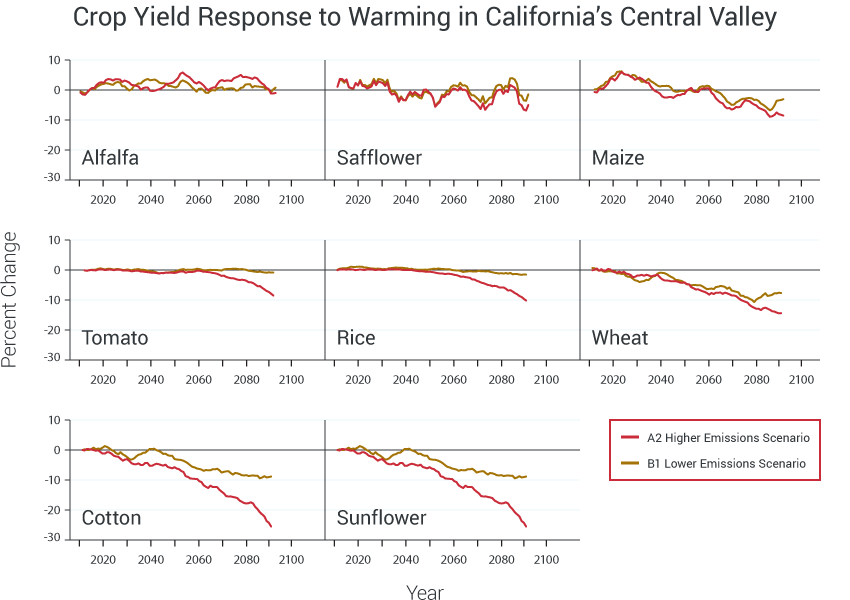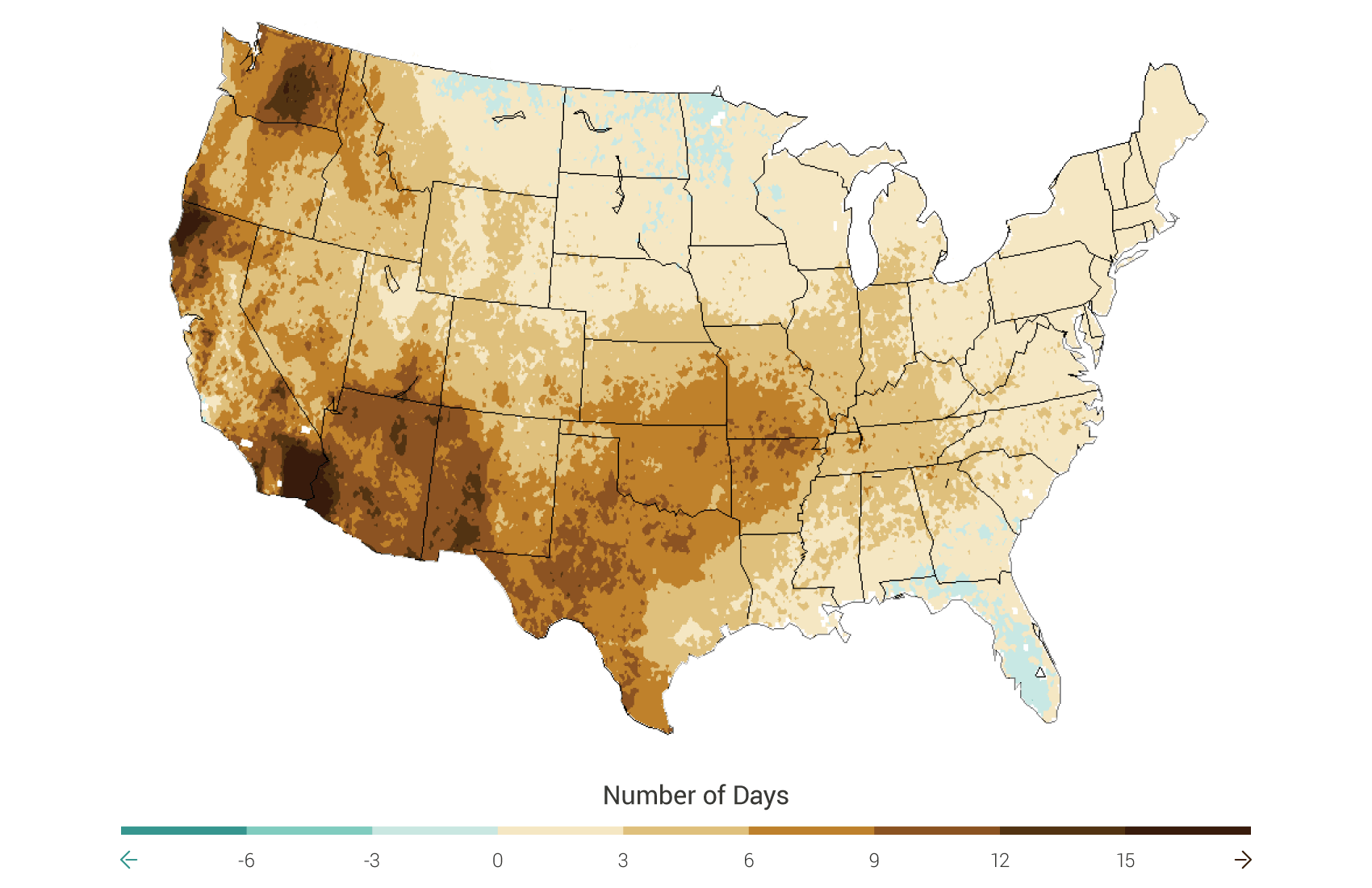Two Allbeef Patties Special Sauce Lettuce Cheese
Over the second half of the 20th century, McDonald's climbed to the top of the restaurant industry food chain by providing consumers with an accessible, low-cost dining option. Even in the face of growing nutrition concerns and alternative fast casual dining options, McDonald's has managed to maintain an edge because of its low prices. That said, global climate change could change all of that. Representing one third of its total expenses, McDonald's food and beverage ingredients are incredibly susceptible to the impacts of rising temperatures. [1]
All across the globe, the agriculture industry is bracing for a future of lower overall crop yields and increased input costs due to warmer temperatures, a shrinking water supply, longer insect breeding seasons, and increased climate related regulation. [2] The downstream cost implications won't only impact McDonald's tomatoes, lettuce, and potatoes. Sugarcane, grain, and coffee farmers will experience similar problems and McDonald's ketchup, soda, bread, and coffee supplies will suffer cost increases as a result.

In addition to produce, the increasing frequency and severity of droughts and high temperatures are placing a huge strain on the cattle industry. Scientists predict that the overall health and reproductive rates of cattle will decline with climate change. [2]
Change in Consecutive Dry Days (1971-2000 compared to 2070-2099 forecasts)

How much of these increased costs can McDonald's pass on to its customers and still maintain a low-cost competitive edge? Is there anything the fast-food chain do to avoid this future world?
Thankfully, as the largest restaurant chain in the world, McDonald's is one of the few companies that has real power to influence how it's food suppliers do business. One year ago, McDonald's joined dozens of other companies in signing on to President Obama's American Business Act on Climate Pledge. [3] According to the pledge, McDonald's has committed to shrinking its carbon footprint by shifting food procurement to more sustainable sources, increasing energy efficiency, promoting the growth of competitive renewable energy sources, and reducing waste. More specifically with respect to its food supply chain, McDonald's has pledged to:
- Start sustainably sourcing beef in 2016 – McDonald's established the Global Roundtable for Sustainable Beef, where it ran a pilot program in Canada testing potential sustainable livestock farming solutions. McDonald's also plays an active role Sustainable Agriculture Initiative Working Group, which has implemented a set of standards in Europe that cattle farmers can follow to obtain more sustainable practices. In short, sustainable livestock farming reduces the amount of grains, soil, and fossil fuel required to raise cattle by allowing allowing cows to graze in larger areas. Many people also maintain that sustainable cattle farming experience lower costs due to healthier livestock. [4]
- 100% of sustainably sourced palm oil by 2020 – By sourcing sustainable palm oil, McDonald's hopes to significantly reduce its role in deforestation.
- 100% sustainably sourced coffee by 2020 – McDonald's has partnered with international non-profits to teach coffee farmers how to sustainably grow coffee. Similar to sustainable livestock farming, sustainable coffee growth possesses the potential to offer higher coffee yields with a lower carbon footprint.
Is it enough?
While it's a good start, the jury is still out on whether McDonald's will actually follow through on these promises. Additionally, McDonald's neglected to commit any resources to drive agriculture reform outside of coffee. I understand McDonald's hesitance, but I don't think that it has much of a choice. While sustainable farming practices may increase costs in the short term, failure to change current farming practices will only lead to even higher costs as global climate change worsens.
If McDonald's really wants to shrink its carbon footprint and reduce cost risk, it may also need to consider alternatives to serving beef on its menu. Methane emissions from beef cows alone represent about 20% of agricultural greenhouse gas emissions.[5] I also don't think that the supply of cattle stands a chance against increased temperatures and more severe droughts, whether they are sustainably raised or not.
Driving agriculture reform and sourcing more environmentally friendly foods doesn't just represent future cost avoidance, it's can also be a great marketing tool. According to the National Restaurant Association's annual culinary forecast, "62% of consumers are likely to make a restaurant choice based on its eco-friendly practices" and "60% are more likely to pick a restaurant that serves food grown or raised in an environmentally friendly way." [6] I recognize that these decisions aren't easy. They represent a fundamental shift in McDonald's brand image. That said, McDonald's can use this as an opportunity to not only better prepare for the future impacts of global warming, but to also stay relevant in the face of evolving consumer tastes.
Word Count: 760
[1] Adam Jones, "Must Know: An Overview of McDonald's" (http://marketrealist.com/2014/07/must-know-mcdonalds-major-operation-costs/).
[2] USGCRP (2014). Hatfield, J., et al, 2014: Ch. 6: Agriculture. Climate Change Impacts in the United States: The Third National Climate Assessment, U.S. Global Change Research Program, 150-174.
[3] McDonald's Corporation, "White House American Business Act on Climate Pledge" (http://corporate.mcdonalds.com/content/dam/AboutMcDonalds/2.0/pdfs/McDonalds_White%20House_Climate%20Pledge_Oct%2019%202015.pdf).
[4] Grace Communications, "Sustainable Livestock Husbandry" (http://www.sustainabletable.org/248/sustainable-livestock-husbandry).
[5] F.N. Tubiello, et al., "Agriculture, Forestry and Other Land Use Emissions by Sources and Removals by Sinks:1990-2011 Analysis," FAO Statistics Division: Working Paper Series, March 2014. (http://www.fao.org/docrep/019/i3671e/i3671e.pdf).
[6] Business Forward Foundation, "Severe Weather and Restaurants: Comparing the Cost and Severe Weather and New Power Plant Emissions Standards on the Restaurant Industry," Nov. 2015. (http://www.businessfwd.org/resources/pdf/Restaurant-Report-Final.pdf).
Source: https://digital.hbs.edu/platform-rctom/submission/two-sustainably-sourced-all-beef-patties-special-sauce-a-bit-of-lettuce-cheese-pickles-no-onions-on-a-sesame-seed-bun-the-bun-is-3-extra/
0 Response to "Two Allbeef Patties Special Sauce Lettuce Cheese"
Postar um comentário